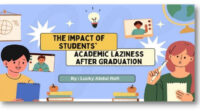Nowadays, social media has become an inseparable part of the learning process. It causes significant changes in their learning, communication, and interaction styles.
Social media platforms like Facebook, Instagram, Twitter, YouTube, and others have become main tools for students to explore, share, and access information including educational contents.
With social media, students may easily connect with classmates, teachers, and even students from around the world. They can discuss, share information, and, give support during the learning process (Dwistia et al., 2022).
In addition, social media also provides wide access to a variety of learning sources and educational contents that can assist students in improving their comprehension of learning material. According to research findings, 70% of students believe that the technology they use for education has to be tailored to their needs as social media users (Rahman Jain, 2001).
The following are the benefits of social media for education:
1. Creating Community
Many students are faced with the challenge of adapting to new learning concepts and specific tasks. Social media helps to maximise the use of collective knowledge across all grade levels to make learning and communication more efficient. As an example:
a. Create a list of class contact in order to collaborate and share relevant learning strategies.
b. Invite teachers who actively use social media to engage their students in learning so they may provide more in-depth explanations and guidances.
2. Organizing Learning Sources
Social media has an important role in ensuring that student information is well-organised and easily accessible. By using social media platforms like Pinterest or Tumblr, students can ensure that their information are saved accurately and safely, and can be easily shared with classmates.
If the document is not yet ready for social media, an alternative is to use cloud storage services like Dropbox, Box, or Google Drive to store educational materials. In addition, students may use content sharing service like Google Docs to help organise their groups and assignments more efficiently (Handayani, 2023).
3. Supporting Learning Materials
Social media is an important tool for helping students understand additional content that can enhance or improve their learning. For example, YouTube provides a variety of videos that can assist students in understanding course material in both visual and auditory formats.
Furthermore, social media allows students to submit various types of documents such as videos, reminders, voice notes, images, graphs, data, and others as a component of the learning process (Sitompul, 2022).
Conclusion
Generally, social media has created a significant impact on education by forming inclusive learning communities, offering facilities on how to apply learning sources effectively, and supporting learning by providing easy access to a variety of educational materials.
By using social media, students may take advantage of collaborative potential, gain support from peers and teachers, and access various learning sources that enhance their learning process. Therefore, the integration of social media in education has become increasingly important in fostering students’ growth to face the coming demands.
Author: Muhammad Danny Izzaldien
Arabic Language Education Student, Muhammadiyah University Prof. Dr. Hamka
Editor: Salwa Alifah Yusrina
Bahasa: Rahmat Al Kafi
References
Dwistia, H., Sajdah, M., Awaliah, O., & Elfina, N. (2022). Pemanfaatan Media Sosial Sebagai Media Pembelajaran Pendidikan Agama Islam. Ar-Rusyd: Jurnal Pendidikan Agama Islam, 1(2), 81–99. https://doi.org/10.61094/arrusyd.2830-2281.33
Handayani, K. W. (2023). Pengaruh Media Sosial Bagi Proses Belajar. 10(1), 51–65.
Rahman Jain. (2001). Pengaruh Media Sosial Bagi Proses Belajar Siswa. Journal of the American Chemical Society, 123(10), 2176–2181. https://cursa.ihmc.us/rid=1R440PDZR-13G3T80-2W50/4. Pautas-para-evaluar-Estilos-de-Aprendizajes.pdf
Sitompul, B. (2022). Kompetensi Guru dalam Pembelajaran di Era Digital. Jurnal Pendidikan Tambusai, 6(3), 13953–13960. https://doi.org/10.31004/jptam.v6i3.4823
Follow the latest news from Indonesian Student Media at Google News















